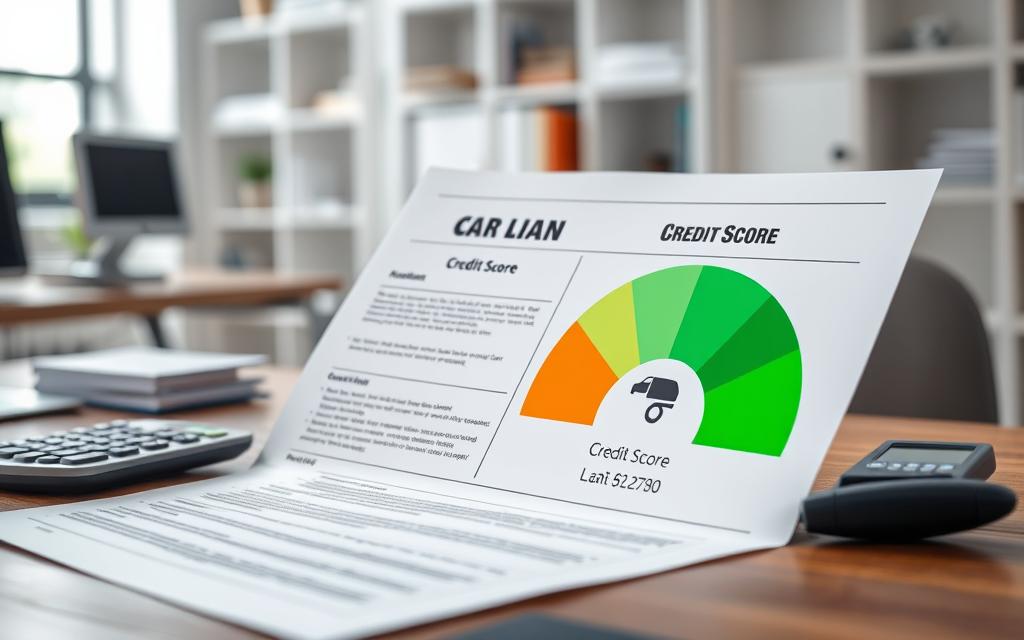Financing a vehicle is one of the most significant financial decisions many people make. However, it can also be one of the easiest to get wrong, potentially leading to costly consequences. Being aware of the key mistakes in car financing is crucial to avoiding financial pitfalls.
Many individuals end up making costly errors when financing a vehicle, resulting in financial strain. By understanding these common mistakes, you can make informed decisions and save money in the long run. Avoiding these pitfalls is essential to ensuring a smooth and cost-effective financing process.
Being informed is the first step to avoiding costly car financing mistakes. By steering clear of these common errors, you can protect your financial well-being and enjoy your new vehicle without the burden of unnecessary expenses.
The Hidden Costs of Car Financing Decisions
Many consumers are unaware of the long-term financial implications of their car financing choices. When financing a car, the total cost involves more than just the purchase price or monthly payments.
The Current State of Auto Loans in America
The auto loan landscape in America is vast and complex. Many buyers take the first offer they receive, often from the dealership, without checking if they could get a better rate elsewhere. This lack of comparison can lead to avoiding costly car loan mistakes being overlooked.
Why Financial Literacy Matters When Buying a Car
Financial literacy plays a crucial role in making informed decisions when buying a car. Understanding the terms of your loan and how they affect your financial situation is key.
Average Interest Paid Over Lifetime of Loans
The average interest paid over the lifetime of a car loan can significantly impact the total cost. For instance, a longer loan term may reduce monthly payments but increase the total interest paid.
Impact of Credit Scores on Financing Terms
Credit scores have a substantial impact on financing terms. A higher credit score can lead to more favorable loan conditions, including lower interest rates, thereby avoiding common car loan errors to avoid.
By understanding these factors and taking steps to secure the best possible financing terms, consumers can make more informed decisions and potentially save thousands of dollars.
Car Financing Mistakes That Can Cost You Thousands
The world of car financing is fraught with potential pitfalls, and being aware of these can save you thousands. Even with a little extra planning, you can strike a better deal on the out-the-door price of a new car.
The Long-term Financial Impact of Poor Financing Choices
Poor financing choices can have a lasting impact on your financial health. Extended loan terms and high-interest rates can lead to paying significantly more than the car’s initial price. It’s crucial to understand the total cost of the loan, not just the monthly payments.
Real-World Examples of Costly Financing Errors
Let’s examine some real-world scenarios where financing mistakes led to substantial financial losses.
Case Study: The $5,000 Mistake
A buyer agreed to a car loan with a lengthy term and a high interest rate, resulting in paying $5,000 more than the car’s sticker price. This avoidable mistake was due to a lack of understanding of the loan terms.
Statistics on American Car Loan Overpayment
Statistics show that many Americans overpay for their car loans. According to recent data, a significant percentage of car buyers end up with negative equity in their vehicles.
Understanding the intricacies of car financing and being aware of the potential pitfalls can help you make more informed decisions and save money in the long run.
Mistake #1: Focusing Solely on Monthly Payments
One of the biggest mistakes car buyers make is obsessing over monthly payments rather than the total cost of ownership. This approach can lead to costly financial decisions that might seem manageable at first but can have long-term consequences.
The Monthly Payment Trap Explained
Dealerships often focus on the monthly payment amount to make the purchase more appealing to buyers. However, this can hide the true cost of the vehicle. Low monthly payments might be achieved by extending the loan term or adding large balloon payments, which can increase the overall cost of the loan.
How Dealers Maximize Profit Through Payment Focus
By focusing on monthly payments, dealers can maximize their profit through various means, such as extending the loan term or adding unnecessary add-ons. This strategy can result in buyers paying more over the life of the loan.
The 84-Month Loan Problem
Extending loan terms to 84 months or more can lead to a situation where the buyer is paying more in interest over the life of the loan. While the monthly payments may be lower, the total cost of the loan increases significantly.
Calculating the True Cost of Extended Loan Terms
To understand the true cost of a car loan, it’s essential to calculate the total interest paid over the loan term. The following table illustrates the difference in interest accumulation between a 48-month and a 72-month loan term.
| Loan Term | Monthly Payment | Total Interest Paid |
|---|---|---|
| 48 months | $450 | $2,500 |
| 72 months | $320 | $4,200 |
Interest Accumulation Comparison: 48 vs. 72-Month Terms
The table above clearly shows that while the monthly payment for a 72-month loan is lower, the total interest paid is significantly higher than that of a 48-month loan. Buyers should carefully consider the loan term and its impact on the total cost.
To make smart car loan decisions, it’s crucial to look beyond the monthly payment and understand the terms of the loan. By doing so, buyers can avoid common pitfalls and save money in the long run.
Mistake #2: Neglecting to Secure Loan Pre-Approval
Pre-approval for a car loan can be a game-changer in the purchasing process, offering both financial savings and negotiating power. When buyers don’t secure pre-approval, they risk being at a disadvantage when negotiating the price of the vehicle.
The Negotiating Power of Pre-Approved Financing
Having pre-approved financing gives buyers a significant advantage when negotiating with dealerships. It signals that they are serious buyers and have already taken steps to secure financing, which can lead to better terms. Dealerships often prioritize customers with pre-approval because it simplifies the sales process and reduces the risk of financing falling through.
Comparing Bank, Credit Union, and Dealer Financing Options
There are multiple sources for car financing, including banks, credit unions, and dealerships. Each has its pros and cons. Credit unions often offer more competitive rates to their members, while banks provide a range of options for different credit scores. Dealer financing, on the other hand, can be convenient but may come with higher rates.
Rate Differences Between Sources
Interest rates can vary significantly between financing sources. For instance, credit unions might offer lower rates compared to banks or dealerships. Shopping around and comparing rates is crucial to securing the best deal. A table comparing average interest rates from different sources can help illustrate these differences:
| Financing Source | Average Interest Rate | Loan Term |
|---|---|---|
| Credit Unions | 3.5% | 60 months |
| Banks | 4.0% | 60 months |
| Dealerships | 5.0% | 60 months |
How to Get the Most Competitive Pre-Approval Terms
To get the most competitive pre-approval terms, buyers should check their credit score and history before applying. Understanding their credit standing helps in negotiating better rates. Additionally, gathering necessary documentation in advance can streamline the pre-approval process.
Documentation Needed for Pre-Approval
Typically, lenders require proof of income, employment verification, and credit information. Having these documents ready can expedite the pre-approval process. It’s also wise to have a clear idea of one’s budget and the desired loan term.
Timing Your Application for Maximum Benefit
The timing of a pre-approval application can impact the terms offered. Applying when credit scores are at their highest and before making large purchases can lead to more favorable terms. Planning ahead is key to maximizing the benefits of pre-approval.
By understanding the importance of pre-approval and taking steps to secure competitive terms, car buyers can save money and navigate the purchasing process more effectively.
Mistake #3: Overlooking Total Cost of Ownership
When buying a car, it’s easy to get caught up in the excitement of choosing the perfect vehicle, but many buyers overlook the ongoing costs associated with car ownership. Understanding the total cost of ownership is crucial for making a smart car loan decision and avoiding costly pitfalls.
Beyond the Sticker Price: Hidden Ownership Costs
The sticker price is just the beginning. There are several hidden costs associated with car ownership that buyers should be aware of. These include insurance premiums, fuel costs, maintenance expenses, and taxes. Insurance premiums, for instance, can vary significantly depending on the type of vehicle you own.
Insurance Premium Variations by Vehicle Type
Different vehicles have different insurance premium rates. For example, luxury cars and sports cars typically have higher insurance premiums compared to sedans or SUVs. Understanding these variations can help you make a more informed decision.
Maintenance Schedule Cost Comparisons
Maintenance costs can also vary significantly between different models. Some cars may require more frequent or expensive maintenance, which can add up over time. Comparing maintenance schedule costs can help you choose a more cost-effective vehicle.
Depreciation Factors That Affect Long-Term Value
Depreciation is another significant factor that affects the total cost of ownership. Some cars depreciate faster than others, and understanding the factors that influence depreciation can help you make a smarter purchase decision. Factors such as the car’s brand, model, and condition can all impact its depreciation rate.
Digital Tools for Calculating Comprehensive Ownership Costs
Fortunately, there are several digital tools available that can help you calculate the comprehensive ownership costs of a vehicle. These tools can provide you with a detailed breakdown of the various expenses associated with car ownership, enabling you to make a more informed decision. Using these tools can help you avoid costly surprises down the road.
By considering the total cost of ownership and using digital tools to calculate comprehensive ownership costs, you can make a more informed car buying decision and avoid costly mistakes. This approach will help you save money in the long run and ensure that you’re making a smart car loan decision.
Mistake #4: Rolling Negative Equity Into New Loans
When buying a new car, incorporating negative equity from an existing loan can seem like an easy way out, but it’s fraught with financial risks. Being “upside down” on a car loan means owing more on the vehicle than it’s worth, a situation that can lead to significant financial strain if not managed properly.
Understanding Upside-Down Car Loans
Negative equity accumulates when the car’s value depreciates faster than the loan balance. This can happen due to various factors, including high mileage, poor maintenance, or simply buying a car that depreciates rapidly.
How Negative Equity Accumulates
Several factors contribute to negative equity, including the initial depreciation hit when a new car is driven off the lot, extended loan terms, and high-interest rates. Understanding these factors is crucial to avoiding the trap of negative equity.
The Snowball Effect of Carrying Old Debt Forward
Rolling negative equity into a new loan can create a snowball effect, where the debt from the old loan is added to the new loan, potentially leading to a larger overall debt burden. This can significantly increase the monthly payments and the total cost of the new loan.
Mathematical Impact on New Loan Terms
For example, if you owe $20,000 on a car worth $15,000, rolling the $5,000 negative equity into a new $30,000 car loan results in a $35,000 loan. This increases the overall debt and can lead to higher monthly payments, making it harder to manage your finances.
Practical Solutions for Breaking the Negative Equity Cycle
To avoid the pitfalls of negative equity, consider the following strategies: saving for a larger down payment, negotiating a better price for your new car, or exploring alternative financing options that don’t involve rolling over negative equity.
Gap Insurance Considerations
Gap insurance can provide a safety net by covering the difference between the car’s value and the loan balance if the car is totaled or stolen. However, it’s essential to weigh the costs and benefits of gap insurance and consider it as part of your overall financing strategy.
Strategic Timing for Trade-ins
Timing your trade-in strategically can help minimize negative equity. For instance, waiting until you’ve paid down more of the loan or until the car’s value stabilizes can reduce the amount of negative equity.
By understanding the risks associated with rolling negative equity into new loans and implementing practical solutions, you can avoid costly car financing mistakes and save money on your car financing.
Mistake #5: Succumbing to Dealership Add-ons and Warranties
One of the costliest mistakes car buyers make is falling prey to the array of add-ons and warranties presented by dealerships. These extras can significantly increase the overall cost of the vehicle, often without providing substantial value to the buyer.
The High Markup Reality of F&I Office Products
Dealerships profit greatly from the sale of add-ons and warranties through their Finance and Insurance (F&I) offices. Products such as paint protection, fabric treatments, VIN etching, and security systems are often marked up significantly.
Paint Protection and Fabric Treatments
Paint protection and fabric treatments are marketed to protect the vehicle’s appearance. However, their costs can be exorbitant compared to the actual cost of the products and services.
VIN Etching and Security Systems
VIN etching and security systems are sold as theft deterrents. While they may offer some benefit, their effectiveness and value are often debated among consumers.
Extended Warranty Value Analysis
Extended warranties are among the most profitable items for dealerships. It’s crucial to analyze their value before purchasing.
Manufacturer vs. Third-Party Coverage
Manufacturer-backed warranties typically offer more comprehensive coverage than third-party providers. Understanding the differences is key to making an informed decision.
| Warranty Type | Coverage | Cost |
|---|---|---|
| Manufacturer | Comprehensive, includes parts and labor | Generally higher |
| Third-Party | Variable, may not cover all parts or labor | Generally lower, but beware of fine print |
Effective Negotiation Tactics for Desired Add-ons
Negotiating add-ons and warranties requires a strategic approach. Buyers should prioritize their needs and be prepared to walk away if the terms are not favorable.
When to Purchase Add-ons Outside the Dealership
Sometimes, purchasing add-ons and warranties outside of the dealership can be more cost-effective. Researching alternatives and comparing prices can lead to significant savings.
By being informed and cautious, car buyers can avoid the costly mistake of succumbing to unnecessary dealership add-ons and warranties, ultimately saving thousands of dollars.
Strategic Approaches to Optimize Car Financing
Optimizing car financing requires a strategic approach to save thousands and make the most of your vehicle purchase. By understanding the intricacies of car financing and employing the right strategies, buyers can significantly reduce their financial burden.
Seasonal Timing for Maximum Dealer Incentives
Timing is everything when it comes to car financing. Dealerships often offer maximum incentives during certain times of the year, such as year-end clearance sales or holiday weekends. Being aware of these periods can help buyers negotiate better deals.
Alternative Financing Sources Worth Exploring
Beyond traditional bank financing, there are alternative sources that can offer more competitive rates and terms. Online lenders and credit unions are worth considering.
Online Lender Advantages
Online lenders offer convenience and often quicker processing times. They may also provide more competitive rates due to lower operational costs.
Credit Union Member Benefits
Credit unions are member-owned cooperatives that can offer more favorable loan terms. Members can benefit from lower interest rates and more personalized service.
Down Payment Strategies That Save Thousands
The down payment is a critical component of car financing. Understanding the optimal down payment percentage can save buyers thousands in interest over the loan term.
Optimal Down Payment Percentages
A higher down payment can reduce the loan amount and lower monthly payments. However, it’s essential to balance this with maintaining adequate cash reserves.
Impact on Interest Rates and Approval Odds
A substantial down payment can also improve loan approval odds and may qualify buyers for better interest rates.
| Down Payment Percentage | Interest Rate Impact | Approval Odds |
|---|---|---|
| 10% | Minimal impact | Lower odds |
| 20% | Moderate reduction | Improved odds |
| 30% | Significant reduction | High odds |
By adopting these strategic approaches, car buyers can optimize their financing and enjoy significant savings. It’s about being informed and making the most of the available options.
Conclusion
Financing a car can be a complex process, and making informed decisions is crucial to avoid costly mistakes. By understanding the key mistakes in car financing, you can save money and make the most of your investment.
The key to avoiding car loan pitfalls to dodge is planning ahead of time and knowing what you want before you shop. This involves securing loan pre-approval, calculating the total cost of ownership, and being cautious of dealership add-ons and warranties.
By being aware of the common mistakes discussed in this article, you can adopt ways to save money on car financing. This includes negotiating the price, considering alternative financing sources, and making strategic down payments.
Ultimately, being informed and prepared is the best way to navigate the car financing process. By doing your research and understanding your options, you can drive away in your new vehicle with confidence, knowing you’ve made a smart financial decision.


